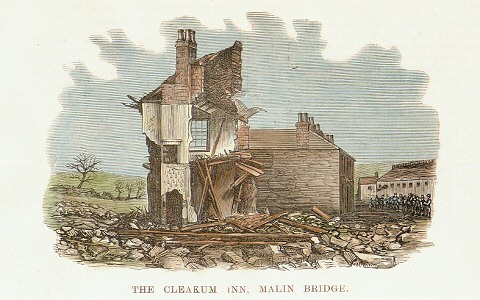
Remains of Hill Bridge and Freemasons Arms (left), Walkley Lane, Hillsborough, Limbrick Lane, right (note, high waterline above second floor windows). Source: Picture Sheffield.
On the night of 11 March 1864 the embankment of the Dale Dyke Reservoir was breached and over 650 million gallons of water were unleashed on the unsuspecting residents in the valley below causing, in terms of loss of life, the greatest disaster of Victorian Britain. Over 250 people were drowned that night, dozens more died in the following months, 4,357 houses were flooded, 798 homes were destroyed and abandoned, 11 wives became widows, and 40 children were orphaned.
The morning of 12 March 1864 dawned bright and clear, very much in contrast to the preceding day. A chance for residents to realise the enormity of the previous day’s events and to take stock of what had happened.
At the Sheffield Union Workhouse 124 unclaimed bodies were laid out awaiting identification. Unidentified bodies were brought to the Cemetery by the Guardians to be buried at the expense of the Sheffield Union.
You can read more about the Great Sheffield Flood in the Sheffield General Cemetery Trust’s publication Drowned Voices and follow the self-guided trail Drowned Voices – Stories of The Great Sheffield Flood.







